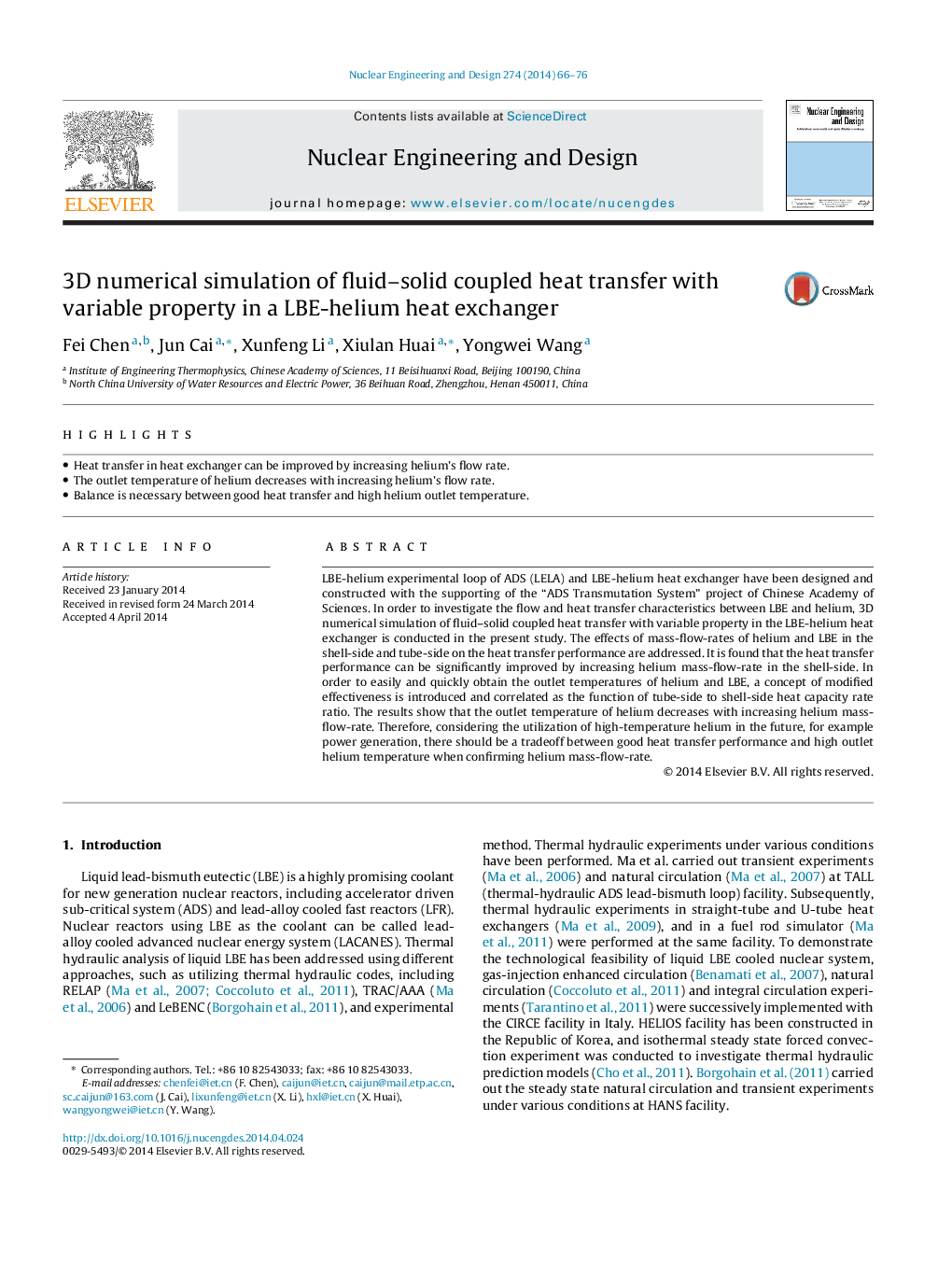| Article ID | Journal | Published Year | Pages | File Type |
|---|---|---|---|---|
| 296444 | Nuclear Engineering and Design | 2014 | 11 Pages |
•Heat transfer in heat exchanger can be improved by increasing helium's flow rate.•The outlet temperature of helium decreases with increasing helium's flow rate.•Balance is necessary between good heat transfer and high helium outlet temperature.
LBE-helium experimental loop of ADS (LELA) and LBE-helium heat exchanger have been designed and constructed with the supporting of the “ADS Transmutation System” project of Chinese Academy of Sciences. In order to investigate the flow and heat transfer characteristics between LBE and helium, 3D numerical simulation of fluid–solid coupled heat transfer with variable property in the LBE-helium heat exchanger is conducted in the present study. The effects of mass-flow-rates of helium and LBE in the shell-side and tube-side on the heat transfer performance are addressed. It is found that the heat transfer performance can be significantly improved by increasing helium mass-flow-rate in the shell-side. In order to easily and quickly obtain the outlet temperatures of helium and LBE, a concept of modified effectiveness is introduced and correlated as the function of tube-side to shell-side heat capacity rate ratio. The results show that the outlet temperature of helium decreases with increasing helium mass-flow-rate. Therefore, considering the utilization of high-temperature helium in the future, for example power generation, there should be a tradeoff between good heat transfer performance and high outlet helium temperature when confirming helium mass-flow-rate.
